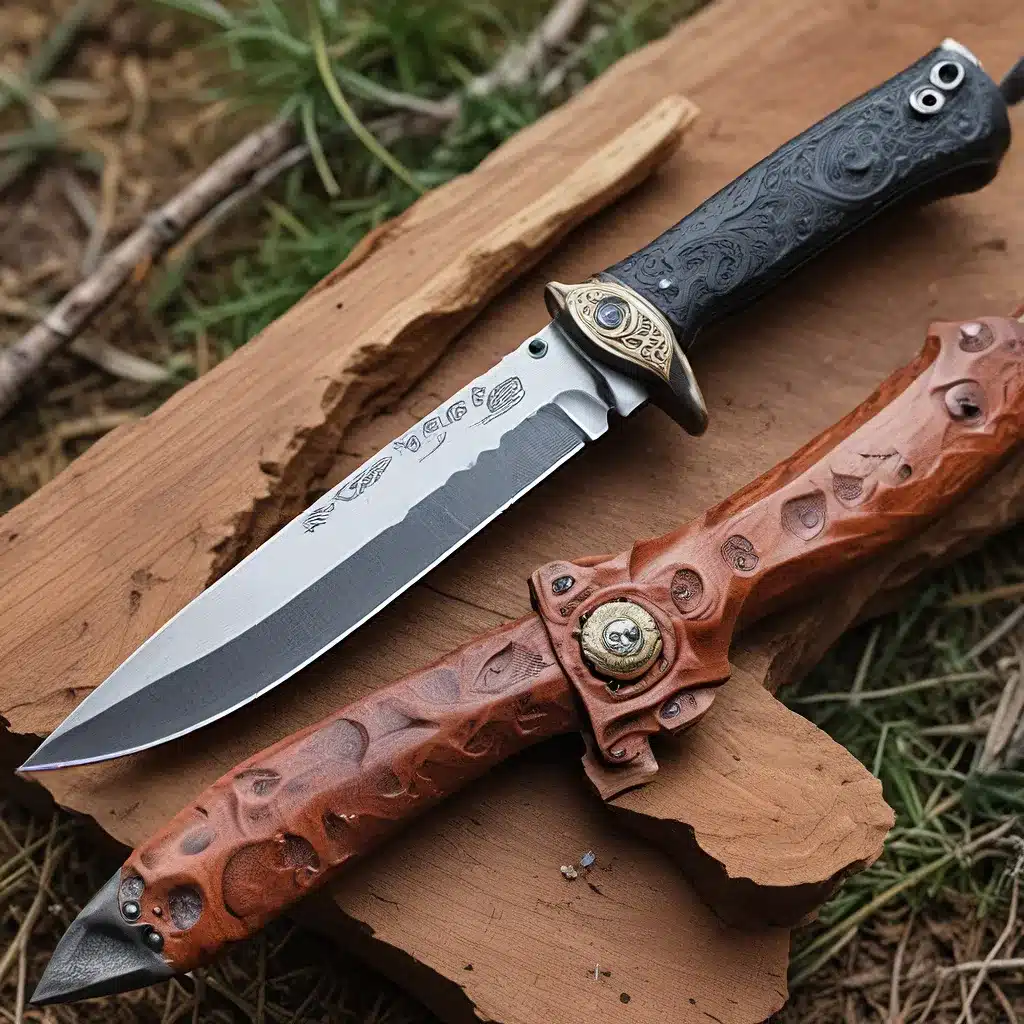
As an avid outdoorsman and knife enthusiast, I’ve always been fascinated by the rich history and evolution of hunting knives. From the rugged, utilitarian blades of our ancestors to the modern, highly specialized designs, these tools have played a pivotal role in our survival and pursuit of the wild.
The Ancient Origins of Hunting Knives
It’s remarkable to think that the earliest hunting knives can be traced back thousands of years, to a time when our ancestors were just beginning to harness the power of sharp, stone-crafted blades. These primitive tools were essential for tasks like skinning animals, preparing food, and even self-defense. As human civilizations advanced, so too did the art of knife-making, with the development of more sophisticated techniques and materials.
One of the most fascinating examples of this evolution is the Ulfberht swords, forged by Viking blacksmiths during the Middle Ages. These blades were renowned for their exceptional quality and durability, thanks to the use of high-carbon steel that was supposedly imported from as far as India. The Ulfberht inscription on these swords was more than just a maker’s mark – it was a symbol of craftsmanship and reliability that set them apart from other weapons of the time.
The Rise of Specialized Designs
As hunting and outdoor pursuits evolved, so too did the demands on the humble hunting knife. No longer was a single, generic blade sufficient – hunters and outdoorsmen began to seek out knives tailored to their specific needs and preferences.
Enter the era of specialized hunting knives. These tools were designed with a keen eye for function, each feature carefully considered to enhance performance in a particular task. From the gut hook for field-dressing game to the serrated edge for sawing through tough materials, the modern hunting knife became a true reflection of the user’s needs and the demands of the environment.
At Herman Knives, we take great pride in offering a wide range of specialized hunting knives, each one crafted with the utmost attention to detail and the needs of our customers. Whether you’re a big-game hunter, a backwoods survivalist, or simply someone who appreciates the beauty and utility of a well-designed blade, we have a knife that will suit your needs.
The Artistry of Knife-Making
But the story of hunting knives isn’t just about function – it’s also about artistry. Over the centuries, master knife-makers have elevated the humble blade to the realm of fine art, incorporating intricate designs, exquisite materials, and even personal inscriptions to create truly one-of-a-kind pieces.
One such example is the Colt Revolver, a legendary firearm from the Wild West era that purportedly bore the inscription “Be not afraid of any man, no matter what his size. When danger threatens, call on me and I will equalize.” This phrase, which gave the gun its iconic “Equalizer” nickname, was more than just a clever turn of phrase – it was a reflection of the power and confidence that the weapon represented.
Similarly, some knife enthusiasts have begun to incorporate their own personal touches and inscriptions into their blades, turning them into truly unique and meaningful tools. Whether it’s a quote that resonates with the owner, a symbol of their faith, or a simple message of encouragement, these inscriptions can imbue a hunting knife with a sense of character and individuality that goes beyond its utilitarian purpose.
The Future of Hunting Knives
As we look to the future, it’s clear that the evolution of hunting knives is far from over. With advancements in materials science, manufacturing techniques, and design, the possibilities for these tools are endless. Innovative blade shapes, durable coatings, and ergonomic handles are just a few of the ways that modern knife-makers are pushing the boundaries of what’s possible.
But beyond the physical attributes, I believe that the true future of hunting knives lies in their symbolic and emotional significance. As we continue to explore the great outdoors and pursue our passions, these blades will serve not only as practical tools but as companions and reminders of our connection to the natural world.
Perhaps one day, a young adventurer will stumble upon a weathered hunting knife, its blade etched with a poignant inscription that speaks to the very essence of the human experience. “Now I am become death, destroyer of worlds,” the blade might read, a chilling reminder of the power and responsibility that comes with wielding such a tool.
Or maybe, a future hunter will strap on a knife bearing the words, “It’s better to die on your feet than live on your knees,” a testament to the indomitable spirit that drives us to push beyond our limits and conquer the unknown.
These are the stories that I believe will shape the future of hunting knives – tales of self-discovery, perseverance, and the shared human experience that binds us all together, no matter how far we may wander.
So, as you embark on your next outdoor adventure, take a moment to appreciate the rich history and evolving artistry of the humble hunting knife. Who knows, perhaps your own story will become woven into the fabric of this timeless tradition, carving a path that will inspire generations to come.


